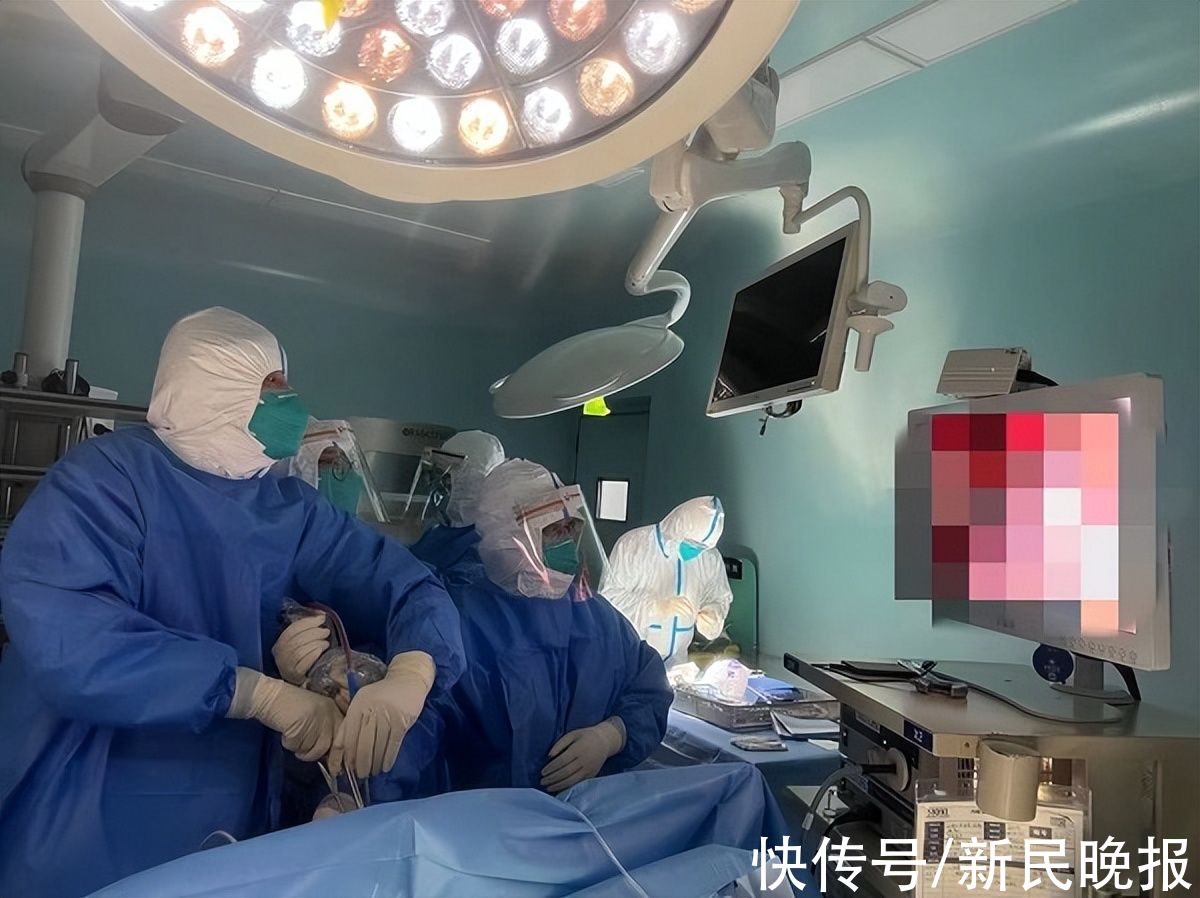
Caption: Renji Hospital completed the first non-tracheal intubation to preserve spontaneous breathing source of thoracoscopic tracheal tumor surgery /Photo provided by the interviewee (the same below)
Under the prevention and control of the epidemic, doctors in Shanghai kept exploring the treatment of difficult technologies and difficult cases. “The patient was able to eat and breathe smoothly this morning.” On the morning of April 5, Zhao Xiaojing, director of the Department of Thoracic Surgery of Renji Hospital Affiliated to Shanghai Jiaotong University School of Medicine, was very happy during the ward round. One day ago, the thoracic surgery team led by Zhao Xiaojing collaborated with the Department of Anesthesiology to complete the hospital’s first thoracoscopic tracheal tumor surgery without tracheal intubation to preserve spontaneous breathing. It is understood that cases and surgical techniques like this are currently very rare across the country.
Ms. Shen, 45 years old, suffered from tracheal tumor. The pathological diagnosis was tracheal malignant tumor by a foreign hospital. Recently, part of the tumor had been palliatively removed under the bronchoscope in the local hospital, and Ms. Shen found the team of Zhao Xiaojing from the Department of Thoracic Surgery of Renji Hospital.
Director Zhao Xiaojing told reporters that traditional thoracotomy to remove tumors is relatively safe, but the postoperative recovery period is long and the patient feels more pain. “The patient is also a doctor, and he hopes to return to work as soon as possible after the operation. Under the premise of fully considering the safety of the patient’s life, we decided to use non-tracheal intubation to preserve spontaneous breathing (Tubeless technology) thoracoscopic tracheal tumor surgery to remove the tumor. ” Zhao Xiaojing revealed.
The thoracoscopic tracheal tumor surgery that preserves spontaneous breathing without endotracheal intubation is known as the “jewel in the crown” in the field of thoracic surgery. Spontaneous breathing thoracoscopic surgery puts forward higher technical requirements for surgeons and anesthesiologists. It requires the tacit cooperation of the team, the precise operation of the surgeon, the rapid removal of the lesion and the suture of the wound, and the anesthesiologist to ensure that the patient is adequately supplied with oxygen during the operation. “It’s like walking a tightrope on a cliff.” Zhao Xiaojing described the operation.
Before the patient’s surgery, the Department of Thoracic Surgery and Anesthesiology of Renji Hospital spent a day and a half designing the surgical plan and preparing multiple plans. “Looking at the whole country, the relevant cases and surgical experience are very limited. But what we need to do is to design a safe and feasible plan from the limited experience and minimize the suffering of patients.

Caption: The medical team of Renji Hospital
< span>On the afternoon of April 4th, after careful preoperative preparation, the first thoracoscopic tracheal tumor surgery without tracheal intubation to preserve spontaneous breathing was started in the operating room.
< span>It is reported that the Department of Thoracic Surgery of Renji Hospital is one of the earliest esophagus and lung surgery bases in China. This operation is the first self-breathing thoracoscopic tracheal tumor surgery without tracheal intubation in the history of Renji Hospital. The operation was performed by Zhao Xiaojing and Pan Wenbiao Two experts were responsible for the completion. At the same time, Dr. Lin Haiping and Dr. Wang Yanlei assisted. Three physicians, Pan Zhiying, Liu Yaling, and Zhu Huichen from the Department of Anesthesiology, were responsible for the anesthesia. The operation took more than 2 hours and was successfully completed.
“The wound after the operation is very small, only 3 cm. The patient not only recovers as soon as possible, but also relieves pain and can return to normal work and life as soon as possible. Zhao Xiaojing pointed out that the whole operation does not require tracheal intubation and muscle relaxants, and the amount of intravenous anesthesia is small, allowing the patient to fully sedate and relieve pain while breathing spontaneously throughout the operation. Postoperative recovery of patients, shortening hospitalization time, reducing hospitalization costs, and achieving the goal of “overall minimally invasive” thoracic surgery.
Xinmin Evening News reporter Zuo Yan p>